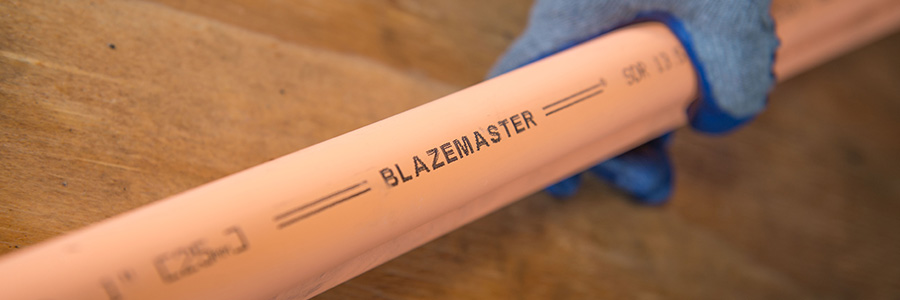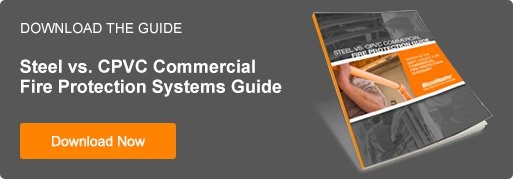Why BlazeMaster® CPVC for Underground Water Supply Pipes?
Fire protection systems are only as reliable as the supply mains that serve them.
In many cases, underground supply mains are used to deliver water from a city water main to a fire sprinkler head. Because mains are installed underground, they are exposed to harsh, corrosive conditions.
Corroded, cracked or damaged supply mains render a fire protection system ineffective. Not only does this result in costly repairs, but it also puts lives at risk. As a result, contractors must pay close attention to the material they use in underground service and water supply lines.
The Case for CPVC Underground Supply Mains
Many contractors prefer chlorinated polyvinyl chloride (CPVC) supply mains for single and multifamily buildings because of helpful features, including its affordability and capacity to handle harsh underground conditions:
- Corrosion resistance: Corrosive substances and bacteria in the ground can eat away at supply pipes—especially metal. This shortens working life and limits the effectiveness of the fire protection system. However, CPVC is engineered to resist a wide range of soil pH levels and salts found underground, ensuring a longer service life, preventing costly repairs, and limiting risk.
- Low cost: Metal and PVC water supply pipes require thrust blocks, costly additions used to restrain pipes and prevent damage from unsupported movement. If thrust blocks are not used, the metal supply pipe will move freely, causing joint separation, leaks and damage to other connected pipes. CPVC supply mains do not require thrust blocks, which lowers the total material cost.
- Temperature resistance: In some cases, polyvinyl chloride (PVC) is used for underground supply pipes. However, because of its poor performance in pressurized hot water systems, PVC is not a reliable material. Although groundwater is usually 60°F, warmer climates can raise water temperature and affect PVC’s pressure bearing capabilities.
- Impact strength: Blows from shovels or heavy construction equipment or longstanding exposure to heavy traffic above can severely damage buried pipes. Because of this, piping material must have a higher impact resistance. Compared to other plastic pipes like PVC, CPVC is a stronger material.
- Abrasion resistance: Abrasions occur when tough, jagged materials come in contact with the pipe wall in underground installations. This results in a loss of pipe material and formation of rough, stiff edges that can cause pipes to leak or even fail. However, CPVC is engineered to offer excellent abrasion resistance, limiting the chance of debris weakening the material.
Additional Considerations for Underground CPVC Supply Mains
To guarantee the longevity and quality of your supply mains, proper installation is essential. Tips for underground installation include:
- Trenching: The trench should be dug only as wide as necessary for pipe installation, and at least 12 inches below the maximum expected frost line. It is also recommended that BlazeMaster® CPVC piping be run within a metal or concrete casing when it is installed beneath surfaces that are subject to heavyweight or constant traffic, such as busy roads and railroad tracks. Bury the pipe 12-18 in. underground in light traffic areas and 30-36 in. in high traffic areas.
- Trench preparation: If large rocks or other barriers exist in the trench bed, cover them with tamped earth or bedding to protect the pipes.
- Piping assembly: Once the piping has been assembled and the solvent cement curing process has begun, it’s crucial to prevent joint stress or movement of any kind. This rule holds true whether the pipe was assembled inside or outside of the trench.
- Laying of pipe: If the piping was assembled outside of the trench, it can be moved into the trench after allotting adequate time for curing. However, the piping must not be rolled or dropped into the trench. Instead, joined piping should be supported while it’s gently placed into the proper position underground.
- Backfilling: Although CPVC has excellent abrasion resistance, we recommend using backfill material that is free of rocks and has a particle size of a ½ inch or smaller. Cover the piping with 6 to 8 inches of backfill. Then, compact the backfill with vibratory or water flooding methods.
If you have any other questions about installation or using CPVC in underground applications, contact one of our CPVC piping specialists.


